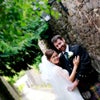Anfield is an association football stadium in the district of Anfield, in Liverpool, England. Built in 1884, the stadium has been home to Liverpool F.C. since they were formed in 1892 as a result of the original tenants Everton F.C. leaving the ground.
The stadium currently comprises four stands: Spion Kop, Main Stand, Centenary Stand and Anfield Road, giving a total capacity of 45,276. The record attendance at the stadium is 61,905 which was set in a match between Liverpool and Wolverhampton Wanderers in 1952. This record was set prior to the ground's conversion to an all-seater stadium in 1994; the changes, which were a result of the Taylor Report, greatly reduced capacity. Notable features of the stadium include two gates named after former Liverpool managers: the Bob Paisley gate and the Bill Shankly gate. In addition, a statue of Shankly is situated outside the stadium. Anfield's public transport links include rail and bus services but it lacks dedicated parking facilities.
Anfield is a UEFA elite stadium, and has hosted many international matches at the senior level, including England matches. The ground was also used as a venue during Euro 96. Earlier in its history the stadium was also used as a venue for different events, such as boxing and tennis matches. The ground is due to host matches during the 2015 Rugby World Cup, with pool matches taking place at the stadium. There are plans to replace Anfield with a new 60,000 capacity stadium in Stanley Park. The opening of the new stadium is scheduled for 2011 but the state of the financial market and disagreement between the club's American co-owners makes this doubtful.
Opened in 1884, Anfield was originally owned by a Mr. Orrell, a fellow brewer and friend of John Houlding, president of Everton FC. Everton, who previously played at Priory Road, were in need of a new venue, due to the noise produced from the crowd on match-days. Orrell let the land to the club for a donation to the local hospital. Everton's landlord changed when John Houlding purchased the land from Orrell in 1885 charging direct rent.
The first match played at Anfield was between Everton and Earlestown on 28 September 1884, which Everton won 5–0. During Everton's tenure at the stadium, stands were erected for some of the 8,000 plus spectators regularly attending matches, although the ground was capable of holding around 20,000 spectators and occasionally did. The ground was considered of international standard at the time, playing host to England versus Ireland in 1889. Anfield's first league match was played on 8 September 1888, between Everton and Accrington Everton quickly improved as a team and three years later in the 1890–91 season became Anfield's first league champions.
.|alt=Flagpole in front of football ground]]
A dispute emerged between Houlding and the Everton FC committee, over how the club was to be owned and run. This dispute escalated from the full purchase of the land at Anfield from minor land owner John Orrell, into a disagreement over how the club was run. This culminated with Everton moving to Goodison Park. Houlding was left with an empty stadium, and decided to form a new club to occupy it. The team was called Liverpool F.C and Athletic Grounds Ltd, and their first match at Anfield was a friendly played in front of 200 people on 1 September 1892, against Rotherham Town, which they won 7–1.
Liverpool's first Lancashire League match at Anfield was played on 9 September 1893, against Lincoln City, Liverpool won 4–0 in front of 5,000 spectators. A new stand was constructed in 1895, capable of holding 3,000 spectators, on the site of the present Main Stand. The stand had a distinctive red and white gable, and was similar to the main stand at Newcastle United's ground St James' Park. Another stand was constructed at the Anfield Road end in 1903, built from timber and corrugated iron. After Liverpool had won their second League championship in 1906, a new stand was built along the Walton Breck Road. Local journalist Ernest Edwards, who was the sports editor of newspapers the Liverpool Daily Post and Echo, christened it the Spion Kop; it was named after a famous hill in South Africa where a local regiment had suffered heavy losses during the Boer War in 1900. More than 300 men had died, many of them from Liverpool, as the British army attempted to capture the strategic hilltop. Around the same period a stand was also built along Kemlyn Road.
The ground remained much the same until 1928 when the Kop was redesigned and extended to hold 30,000 spectators, all standing, with a roof erected as well. Many stadia in England had stands named after the Spion Kop, however Anfield's was the largest Kop in the country at the time. It was able to hold more supporters than some entire football grounds. The topmast of the SS Great Eastern, one of the first iron ships, was rescued from the ship breaking yard at nearby Rock Ferry, and was hauled up the Everton Valley by a team of horses to be erected alongside the new Kop where it still stands today, serving as a flag pole.
Floodlights were installed and on 30 October 1957, they were switched on for the first time for a match against Everton, to commemorate the 75-year anniversary of the Liverpool County Football Association. In 1963 the old Kemlyn Road stand was replaced by a cantilevered stand, able to hold 6,700 spectators and built at a cost of £350,000. Two years later alterations were made at the Anfield Road end, turning it into a large covered standing area. The biggest redevelopment came in 1973, when the old Main Stand was demolished and a new one was constructed. At the same time, the pylon floodlights were pulled down and new lights installed along the top of the Kemlyn Road and Main Stands. The new stand was officially opened on 10 March 1973, by the Duke of Kent. In the 1980s the paddock in front of the Main Stand was turned into seating, and in 1982 seats were introduced at the Anfield Road end. The Shankly Gates were erected in 1982, a tribute to former manager Bill Shankly; Shankly's widow Nessie unlocked them for the first time on 26 August 1982. Across the Shankly Gates are the words You'll Never Walk Alone, from the Gerry & The Pacemakers' hit song that Liverpool fans adopted as the club's anthem.
Coloured seats and a police-room were added to the Kemlyn Road stand in 1987. After the Hillsborough disaster in 1989, the Taylor Report recommended that all grounds in the country should be converted into all-seater grounds by May 1994. A second tier was added to the Kemlyn Road stand in 1992, turning it into a double decker layout. It included executive boxes and function suites as well as 11,000 seating spaces. Plans to expand the stand had been made earlier, with the club buying up houses on Kemlyn Road during the 1970s and 1980s. Plans were put on hold until 1990 because two sisters, Joan and Nora Mason, refused to sell their house. When the club reached an agreement with the sisters in 1990, the expansion plans were put into action. The stand was officially opened on 1 September 1992, by UEFA president Lennart Johansson and re-named the Centenary Stand. The Kop was rebuilt in 1994 after the recommendations of the Taylor Report and became all seated; although it is still a single tier, the capacity was significantly reduced to 12,390.
outside Anfield|alt=Statue of a man with his arms held aloft]]
On 4 December 1997, a statue of Bill Shankly, created from bronze, was unveiled at the visitors' centre in front of the Kop. Standing at over 8 feet (2.4 m) tall, the statue depicts Shankly wearing a fan's scarf around his neck, in a familiar pose he adopted when receiving applause from fans. Inscribed on the statue are the words: "Bill Shankly - He Made the People Happy". The Hillsborough memorial is situated alongside the Shankly Gates, and is always decorated with flowers and tributes to the 96 people who died as a result of the disaster. At the centre of the memorial is an eternal flame, signifying that those who died will never be forgotten. The most recent change to Anfield came in 1998 when the new two-tier Anfield Road end was opened. The stand has however encountered a number of problems since its redevelopment. At the beginning of the 1999–2000 season a series of support poles and stanchions had to be brought in to give extra stability to the top tier of the stand. During Ronnie Moran's testimonial against Celtic many fans complained of movement of the top tier. At the same time that the stanchions were inserted the executive seating area was expanded by two rows in the main stand, lowering the capacity for seating in the paddock.
The pitch is surrounded by four all-seater stands, the Anfield Road end, the Centenary Stand, the Kop and the Main Stand, all of which are covered. The Anfield Road end and Centenary Stand are two-tiered, while the Kop and Main Stand are single-tiered. Entry to the stadium is gained by radio-frequency identification (RFID) smart cards rather than the traditional manned turnstile. This system, used in all 80 turnstiles around Anfield, was introduced in 2005.
The Centenary Stand was originally named the Kemlyn Road stand before the addition of a second tier. After the expansion was complete, the stand was renamed to mark the club's hundredth anniversary. The capacity of the stand is 11,762, with 4,600 spaces on the upper tier and 6,814 on the lower tier, while 348 spaces are also available in the executive boxes within the stand. The Anfield Road stand is used to house the away fans during matches. Originally a simple single-tier stand with multi-coloured seats, a second tier has been added to the original stand, increasing the capacity to 9,074, consisting of 2,654 spaces on the upper tier, 6,391 on the lower tier and 29 spaces for disabled persons.
The Kop was originally built as an uncovered terrace capable of holding 30,000 spectators, although a roof was added in 1928. However, following the Hillsborough disaster and the subsequent Taylor Report, a new all-seater Kop was constructed with a capacity of 12,409, with nine disabled spaces. It is currently the largest single tier stand in Europe. The Main Stand houses the director's box and the player's dressing rooms. The capacity of the stand is 12,277 seats consisting of 9,597 main stand seats, 2,409 available in the paddock, 177 in the directors box, 54 for the press box, and 40 disabled spaces.
There are 32 total spaces available to accommodate wheelchair users; 22 spaces are available for general sale, eight spaces are allocated to the away supporters, and another two spaces are kept unused for emergency circumstances. There are 36 spaces available for the visually impaired, which are situated in the paddock area of the Main Stand, with space for one personal assistant. A headset with full commentary is also provided.
Above the stairs that lead down to the pitch hangs a sign stating "THIS IS ANFIELD". Its purpose is to both intimidate the opposition and to bring those who touch it good luck. Accordingly, Liverpool players and coaching staff reach up and place one or both hands on it as they pass underneath.
The stadium also features tributes to two of the club's most successful managers: the Paisley Gates, in tribute of Bob Paisley, who guided Liverpool to three European Cups and six League Championships in the 1970s and 80s. They were erected at the Kop, their design includes the three European Cups Paisley won during his tenure, the crest of his birthplace in Hetton-le-Hole, and that of Liverpool FC. There is also the Shankly Gates, in tribute of Bill Shankly, Paisley's predecessor between 1959 and 1974. Erected at the Anfield Road end, their design includes a Scottish flag, a Scottish thistle, the Liverpool badge and the words "You'll Never Walk Alone".
The dimensions of the pitch at Anfield are 111 yards (101 m) by 74 yards (68 m), which is just above The Football Association's recommended pitch dimensions of 110 yards (101 m) by 70 yards (64 m). The pitch at Anfield is cut two times a week during the football season and four times a week during the close season. The grass is one inch during the football season, and two inches high at any other time. Under-soil heating was introduced in 1982. During a matchday the groundsman receive help from the staff at the club's training ground—Melwood. They assist by filling in divots at half-time, and usually restore the pitch for two hours after full-time. There are 400 to 420 stewards in attendance during matchday and in addition to this 65 police officers, along with a doctor, two paramedic teams and 40 St. John Ambulance officers are also present. Safety is paramount at the ground, as it features an in house police station, a fire warning system linked to Merseyside fire brigade, electronic exit gates, Closed-circuit television cameras in and outside the ground, four fully equipped first aid rooms and three ambulances.
Original plans to replace Anfield were initiated by Liverpool FC in May 2002. At that time the proposed capacity was 55,000, but it was later revised to 61,000, with 1,000 seats given for segregation between home and away fans. Several attempts were made by the Liverpool City Council to instigate a groundshare of the proposed stadium with local rivals Everton from 2003 to 2007, but this move was rejected as neither club favoured it.
Liverpool were granted planning permission on 30 July 2004, to build a new stadium, just 300 yards (270 m) away from Anfield at Stanley Park, and on 8 September 2006, Liverpool City Council agreed to grant Liverpool FC a 999-year lease of the land on the proposed site. Following the takeover of Liverpool F.C. on 6 February 2007, by George Gillett and Tom Hicks, the proposed stadium was redesigned to reduce the costs of construction. In November 2007, the redesigned layout was approved by the council and construction was due to start in early 2008. The new stadium, provisionally called Stanley Park Stadium, is being built by HKS, Inc. and is scheduled to open in August 2011 with a capacity of 71,000. Once the new stadium is built Anfield will be demolished and become the centrepiece for the Anfield Plaza development, which will include a hotel, restaurants, and offices.
However, the construction of Stanley Park, as of 2008, has been delayed following the slowing of the American economy, directly affecting American-owned Liverpool. This has been worsened because the club was bought with loaned money, not the owners' own capital, and interest rates are higher than previously expected. Hicks and Gillett made promises to begin work on the stadium after the acquisition of the club but have had trouble financing the estimated £300 million needed for the Stanley Park development. The deadline to begin work within 60 days of the takeover has passed and as of May 2008 the site remains untouched. The delays have had repercussions in the local area of Anfield, with regeneration plans on hold till the future of Anfield is decided. Debt incurred by the club's takeover also exacerbates the matter as it reduced the owners' and the club's spending power. This fact has also revived interest in a takeover bid by Dubai International Capital, a move which also could delay movement to the new stadium.
Anfield has hosted numerous international matches, and was one of the venues used during Euro 96; the ground hosted four matches, which included three group games and a quarter-final. The first international match to be hosted at Anfield was between England and Ireland, in 1889, England won the match 6–1. England have also played Wales at the stadium on three occasions, in 1905, 1922 and 1931, England won all three matches. The most recent international to be hosted at Anfield was England's 2–1 victory over Uruguay on 1 March 2006. The last of the five FA Cup semi-finals held at Anfield occurred in 1929. England have played two testimonials against Liverpool at Anfield. The first was in 1983 when England faced Liverpool for Phil Thompson's testimonial. Then, in 1988, England visited again for Alan Hansen's testimonial. Wales have also staged three matches at Anfield against Scotland in 1977 and against Italy in 1998 and Denmark in 1999.
Anfield has been the venue for many other events, and during the inter-war years boxing matches were regularly held there. A number of British boxing championships were contested and on 12 June 1934, Nelson Tarleton fought for the World Featherweight title against Freddie Miller. Professional tennis was played at Anfield on boards on the pitch, US Open champion, Bill Tilden and Wimbledon champion, Fred Perry entertained the crowds in an exhibition match. During the mid-twenties, Anfield was the finishing line for the city marathon. Liverpool also held an annual race which started from St George's plateau in the city centre and finished with a lap of Anfield. In July 1984, the American evangelist Billy Graham preached at Anfield for a week, attracting crowds of over 30,000 a night. Anfield was featured in Liverpool's 2008 European Capital of Culture celebrations. 36,000 people attended a concert on 1 June 2008, featuring bands such as The Zutons, Kaiser Chiefs and Paul McCartney. Anfield has been confirmed as one of the grounds that will host matches during the 2015 Rugby World Cup.
The highest attendance recorded at Anfield is 61,905 for Liverpool's match against Wolverhampton Wanderers in the FA Cup fifth round on 2 February 1952. The record modern (all-seated) attendance is 44,983 for a match against Tottenham Hotspur on 14 January 2006. The lowest attendance recorded at Anfield was 1,000 for a match against Loughborough on 7 December 1895. The highest average attendance at Anfield over a league season was 48,127, set in the 1972–73 season. The lowest average attendance at Anfield was 29,608, set in the 1960–61 season, whilst the team was in the Second Division. The highest total seasonal attendance was recorded during the 2000–01 season when the aggregate was 1,328,482.
Liverpool did not lose a home league match at Anfield during the 1893–94, 1970–71, 1976–77, 1978–79, 1979–80, 1987–88 and 2008–09 seasons. They also won all their home games during the 1893–94 season. From January 1978 to January 1981, Liverpool did not lose a match at Anfield, encompassing 85 games, in which Liverpool scored 212 goals and conceded 35.the record attendace for away fans is held by Portsmouth football club who took over 18,900 fans for a leauge cup game in the early 90S.
The stadium is about 2 miles (3 km) from Lime Street Station, which lies on a branch of the West Coast Main Line from London Euston. Kirkdale Station is the nearest station to Anfield and is about 1 mile (1.6 km) from the stadium. Fans travelling by train for matches may book direct to Anfield or Goodison Park, changing to the Merseytravel Soccerbus service at Sandhills Station on the Merseyrail Northern Line. The stadium has no parking facilities for supporters, and the streets around the ground allow parking only for residents with permits. There are plans under consideration for reinstating passenger traffic on the Bootle Branch which would cut the distance from a station to about 0.5 miles (1 km).





